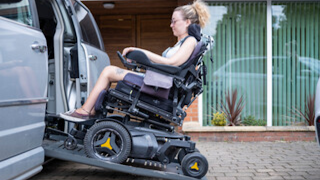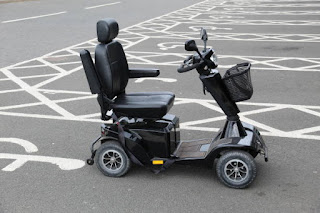Accessibility and Inclusion: The Impact of Mobility Scooters and Electric Wheelchairs
In recent years, there has been a growing awareness of the importance of accessibility and inclusion in our society. One area where this has had a significant impact is the prevalence of sites such as Scootaroundstore.ca, which cater to people with mobility issues and have mobility scooters for sale or electric wheelchairs for sale. These devices have enabled millions of people around the world to regain their mobility and independence and have had a profound impact on their lives.
In this article, we will explore the impact of mobility scooters and electric wheelchairs on accessibility and inclusion, and how these devices are changing the way we think about mobility and disability.
The Impact on Accessibility and Inclusion
The impact of mobility scooters and electric wheelchairs on accessibility and inclusion has been profound. These devices have helped to break down many of the barriers that people with mobility impairments face and have made it possible for them to participate more fully in society.
For example, mobility scooters and electric wheelchairs have made it possible for people with mobility impairments to access public transportation more easily. Many buses and trains are now equipped with ramps or lifts that enable people with mobility impairments to board and disembark, and many cities have also introduced designated parking spaces for mobility scooters and electric wheelchairs.
In addition to improving access to public transportation, mobility scooters and electric wheelchairs have also made it possible for people with mobility impairments to access buildings and facilities that were previously inaccessible. Many buildings now have ramps or lifts that enable people with mobility impairments to enter and exit more easily, and many facilities have also introduced accessible toilets and changing rooms.
Perhaps most importantly, the use of mobility scooters and electric wheelchairs has helped to improve the social and emotional well-being of people with mobility impairments. By enabling them to participate more fully in society, these devices have helped to reduce feelings of isolation and loneliness, and have enabled people to form new friendships and social connections.
The Benefits of Mobility Scooters and Electric Wheelchairs
First, it is important to recognize the many benefits that the popularity of electric wheelchairs or mobility scooters directly or indirectly provides to people with mobility impairments. These devices can significantly improve quality of life by enabling people to travel more easily and participate fully in a wide range of activities. For example, mobility scooters and electric wheelchairs can make it possible for people with mobility impairments to:
The Impact on Accessibility and Inclusion
The impact of mobility scooters and electric wheelchairs on accessibility and inclusion has been profound. These devices have helped to break down many of the barriers that people with mobility impairments face and have made it possible for them to participate more fully in society.
For example, mobility scooters and electric wheelchairs have made it possible for people with mobility impairments to access public transportation more easily. Many buses and trains are now equipped with ramps or lifts that enable people with mobility impairments to board and disembark, and many cities have also introduced designated parking spaces for mobility scooters and electric wheelchairs.
In addition to improving access to public transportation, mobility scooters and electric wheelchairs have also made it possible for people with mobility impairments to access buildings and facilities that were previously inaccessible. Many buildings now have ramps or lifts that enable people with mobility impairments to enter and exit more easily, and many facilities have also introduced accessible toilets and changing rooms.
Perhaps most importantly, the use of mobility scooters and electric wheelchairs has helped to improve the social and emotional well-being of people with mobility impairments. By enabling them to participate more fully in society, these devices have helped to reduce feelings of isolation and loneliness, and have enabled people to form new friendships and social connections.
The Benefits of Mobility Scooters and Electric Wheelchairs
First, it is important to recognize the many benefits that the popularity of electric wheelchairs or mobility scooters directly or indirectly provides to people with mobility impairments. These devices can significantly improve quality of life by enabling people to travel more easily and participate fully in a wide range of activities. For example, mobility scooters and electric wheelchairs can make it possible for people with mobility impairments to:
- Go shopping and run errands independently
- Travel to work or school
- Participate in social activities and events
- Access public transportation
- Explore outdoor spaces and nature trails
- Engage in physical activity and exercise
In addition to these practical benefits, mobility scooters and electric wheelchairs can also provide important psychological benefits by reducing social isolation and increasing self-confidence and self-esteem.
Improving Accessibility and Inclusion
Despite the many benefits of mobility scooters and electric wheelchairs, there are still many challenges that need to be addressed in order to improve accessibility and inclusion for people with mobility impairments. One of the biggest challenges is physical accessibility. Many buildings, public spaces, and transportation systems are not designed to accommodate mobility scooters and electric wheelchairs, making it difficult or impossible for people with mobility impairments to access these spaces. This can be particularly challenging in older buildings and public spaces, which may not have been designed with accessibility in mind.
Another challenge is social inclusion. People with mobility impairments may face discrimination or social isolation due to the stigma associated with disability. They may also face barriers to employment, education, and other opportunities due to physical or attitudinal barriers. In order to promote social inclusion, it is important to address both the physical and social barriers that people with mobility impairments face.
Addressing the Challenges
There are many ways that we can address the challenges of accessibility and inclusion for people with mobility impairments. One of the most important is through policy and legislation. Governments can play a key role in promoting accessibility and inclusion by passing laws and regulations that require buildings, public spaces, and transportation systems to be designed to accommodate mobility scooters and electric wheelchairs. Governments can also provide financial support to organizations and businesses that work to promote accessibility and inclusion.
In addition to policy and legislation, there are many other ways that individuals and organizations can promote accessibility and inclusion. For example, businesses can provide training to their employees on how to interact with customers with disabilities, and can ensure that their websites and online services are accessible to people with disabilities. Community organizations can organize events and activities that are inclusive and accessible, and can work to raise awareness about the challenges that people with mobility impairments face.
Conclusion
The wide variety of electric wheelchairs and mobility scooters for sale has transformed the lives of millions of people around the world, providing greater independence, mobility, and participation in society. However, there are still many challenges that need to be addressed in order to improve accessibility and inclusion for people with mobility impairments. By working together to address these challenges, we can create a more inclusive and accessible society for all.


.jpg)

Comments
Post a Comment